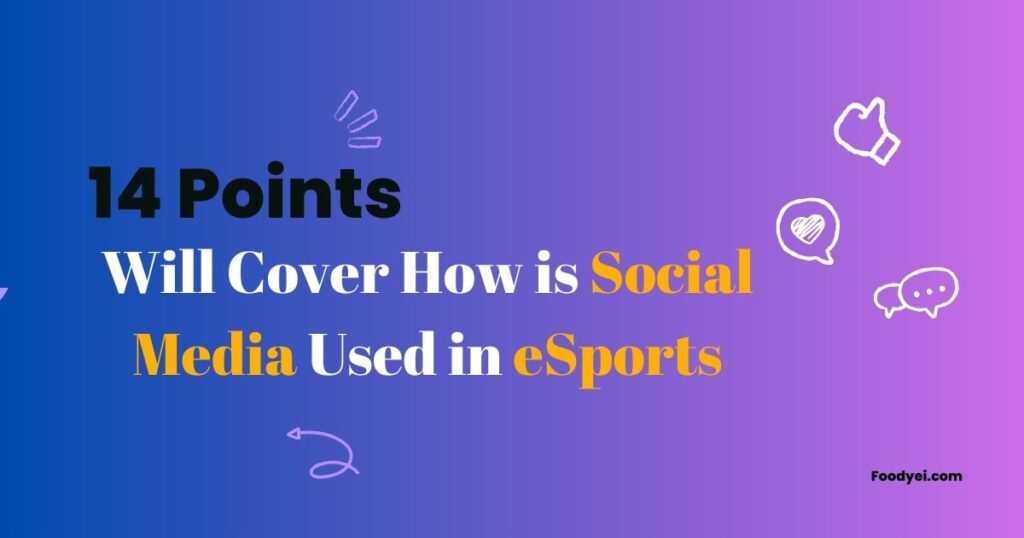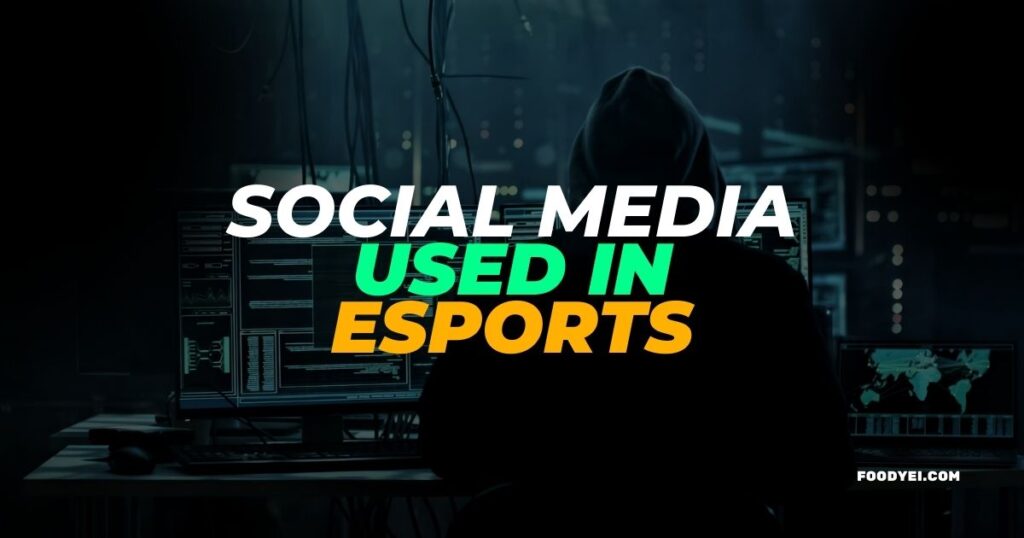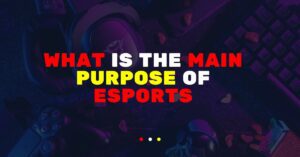Social media is now a crucial component of our daily routines, affecting the way we connect, communicate, and consume material. Its impact spreads to different businesses, and eSports is no exception. eSports, often known as electronic sports, is a fast-rising sector that incorporates competitive video gaming. With its great popularity, it’s no wonder that social media platforms play a big part in developing and enriching the eSports experience. In this blog, we will analyze 14 different methods of social media used in eSports.
These 14 Points Will Cover How is Social Media Used in eSports

1. Creating a Community of Fans
Social media allows eSports enthusiasts to come together, forming a vibrant and active community. Fans can connect with like-minded individuals, share their experiences, and discuss the latest developments in the eSports scene. Online forums, Facebook groups, and dedicated eSports subreddits foster a sense of belonging and create a space for passionate fans to interact.
2. Real-Time Updates and News
Social media platforms serve as real-time news sources for eSports events. Organizations and players can quickly share updates, match results, and breaking news through their social media profiles. Fans can stay informed and engaged, receiving instant notifications and participating in discussions about ongoing tournaments and competitions.
3. Player and Team Interaction
Social media bridges the gap between eSports professionals and their fans. Players and teams utilize platforms like Twitter and Instagram to interact with their followers, providing glimpses into their lives, sharing personal experiences, and answering fan questions. This direct communication strengthens the bond between players and their supporters.
4. Event Promotion and Coverage
Social media is instrumental in promoting eSports events to a wider audience. Tournament organizers leverage platforms to create buzz, share event details, and release ticket information. Additionally, live coverage, highlights, and post-match analysis are shared through social media channels, allowing fans to stay engaged even if they cannot attend the event physically.
5. Live Streaming and Viewing Parties
Platforms like Twitch and YouTube Gaming have revolutionized the way eSports is consumed. Fans can watch live streams of their favorite eSports matches, cheer for their preferred teams, and engage in live chat with fellow viewers. Viewing parties on social media provide a shared experience, creating a virtual arena where fans can celebrate victories and discuss gameplay strategies.
6. Influencer Marketing
Influencer marketing has become a powerful tool in the eSports industry. Social media influencers, who have a substantial following and expertise in gaming, collaborate with eSports brands and teams to promote products, events, and tournaments. Their endorsements and content create awareness and generate interest among their dedicated fan bases.
7. Sponsorship and Advertising
Social media offers eSports organizations and teams a platform to attract sponsors and advertisers. With their wide reach and targeted demographics, platforms like Instagram and Twitter enable brands to connect with the eSports audience effectively. Sponsored posts, partnerships, and brand collaborations generate revenue for the eSports industry and support its growth.
8. Social Media Contests and Giveaways
To engage and reward their followers, eSports organizations and players frequently organize social media contests and giveaways. These promotions encourage fan participation, increase brand awareness, and foster loyalty among the community. Prizes can range from exclusive merchandise to VIP event tickets, creating excitement and anticipation.
9. Fan Engagement and Feedback
Social media allows eSports fans to have a voice and actively participate in the community. Polls, surveys, and open discussions enable organizations to gather feedback from their audience, shaping future decisions and initiatives. Fans’ opinions and suggestions are valued, fostering a sense of inclusivity and ownership within the eSports ecosystem.
10. Behind-the-Scenes Content
Social media platforms provide a glimpse behind the curtain, showcasing the personal and professional lives of eSports players and teams. Exclusive interviews, vlogs, and behind-the-scenes content give fans an intimate look at their favorite players’ journeys, training routines, and tournament preparations. This transparency strengthens the connection between players and fans.

11. Game Updates and Patch Notes
Social media acts as a channel for game developers to share updates, patch notes, and upcoming features directly with the eSports community. Platforms like Twitter and Reddit facilitate open communication between developers and players, ensuring that the latest changes and improvements are conveyed swiftly and comprehensively.
12. Recruiting New Players and Talent
Esports organizations often scout for new players and talent through social media platforms. By evaluating players’ skills, achievements, and online presence, teams can identify potential recruits. Additionally, aspiring players can showcase their abilities and garner attention through their social media profiles, providing a gateway to professional opportunities.
13. Education and Learning Resources
Social media serves as an educational hub for eSports enthusiasts. YouTube tutorials, Twitch streams, and Twitter threads offer valuable insights, strategies, and gameplay analysis. Aspiring players can learn from experienced professionals, and fans can deepen their understanding of the sport, fostering continuous growth and improvement within the community.
14 Cross-Promotion with Other Industries
Social media allows eSports to collaborate and cross-promote with other industries, reaching new audiences and expanding its influence. Partnerships with brands, music artists, film franchises, and celebrities help create unique experiences that attract diverse communities and promote the fusion of different forms of entertainment.
Conclusion
Social media has transformed the landscape of eSports, enhancing fan engagement, facilitating communication between players and their supporters, and promoting the sport to a global audience. Its multifaceted usage, from real-time updates and event coverage to community building and influencer marketing, has made social media an indispensable tool in the world of eSports.
FAQs
1. How has social media impacted the growth of eSports?
Social media has significantly contributed to the growth of eSports by connecting fans, providing real-time updates, promoting events, and facilitating player-fan interactions.
2. Which social media platforms are most commonly used in eSports?
Platforms like Twitter, Instagram, Facebook, Twitch, and YouTube are widely used in the eSports industry to engage with fans, share content, and promote tournaments.
3. How do social media contests benefit eSports organizations?
Social media contests generate fan engagement, increase brand awareness, and foster loyalty among the eSports community, ultimately supporting the growth of organizations and teams.
4. How does social media influence sponsorship and advertising in eSports?
Social media platforms provide a targeted and influential audience, making them attractive for sponsors and advertisers looking to connect with the eSports demographic.
5. What role does social media play in player recruitment in eSports?
Social media platforms serve as a means for eSports organizations to scout new players and talent while aspiring players can showcase their skills and gain visibility.




